2 F. morning low in the Twin Cities Saturday morning.
-26 F. record low, set on January 26, 1897.
23 F. high in the Twin Cities Saturday.
24 F. average high on January 26.
40 F. high on January 26, 2012.
Winter Weather Advisory today for a period of ice and rain, ending as 1"+ snow tonight.
Thaw likely Monday, then much colder the latter half of this week.
Icy Potential
Last week was probably the coldest of winter,
with 5 nights below zero in the metro. So a forecast of rain today is a
bit baffling for most of us. "Why won't it snow Paul?" Too much mild air
aloft.
Fact: 4X more midwinter rain and ice since 2000.
Freezing rain (glaze ice) will cause problems today, especially outside
the metro area. With surface temperatures from 28-32 F. rain will
freeze on contact, especially on secondary roads, bridges and sidewalks.
All-wheel drive is great on snow, but nothing
short of an M1 Abrams tank (photo above) will provide traction on ice.
Be careful out there. A few models hint at an inch or two of slushy snow
this evening, a better chance of more accumulation over northern
Wisconsin. A Monday thaw gives way to another burst of slush on Tuesday,
a sloppy inch ahead of the next slug of Arctic air. By Thursday highs
hold near zero, 2 or 3 more nights of negative fun - but not quite as
numbing as last week.
Models show more 30s next week; a relatively
mellow start to February. Yes, we'll see more cold fronts but last week
may have been the worst of it. As of tomorrow: 51 minutes of additional
daylight since December 21. Average highs have risen 2 whole degrees!
* photo above: U.S. Army.
Winter Weather Advisory Metro Area - Winter Storm Warning Southeastern MN.
The main concern today is freezing rain, rain freezing on contact with
cold surfaces, especially south/east of MSP. Here's the latest from the
Twin Cities NWS:
URGENT - WINTER WEATHER MESSAGE
NATIONAL WEATHER SERVICE TWIN CITIES/CHANHASSEN MN
1118 PM CST SAT JAN 26 2013
...WINTRY PRECIPITATION LIKELY SUNDAY AND SUNDAY NIGHT...
.A WINTRY MIX OF PRECIPITATION IS EXPECTED TO MOVE INTO SOUTHERN
MINNESOTA ON SUNDAY MORNING...AND THEN SPREAD NORTH AND EAST
ACROSS CENTRAL AND EAST CENTRAL MINNESOTA AND WEST CENTRAL
WISCONSIN DURING THE LATE MORNING AND AFTERNOON HOURS. THE
PRIMARY PRECIPITATION TYPE DURING THE DAYTIME IS EXPECTED TO BE
FREEZING RAIN...POTENTIALLY MIXED WITH OR CHANGING OVER TO SNOW
DURING THE AFTERNOON AND EVENING HOURS. ICE ACCUMULATIONS APPEAR
QUITE POSSIBLE...ESPECIALLY FROM SOUTH CENTRAL MINNESOTA ON NORTH
AND EAST TOWARD THE TWIN CITIES AND EAU CLAIRE. SNOW ACCUMULATIONS
IN THE ONE TO THREE INCH RANGE ARE ALSO POSSIBLE... ESPECIALLY
ACROSS WEST CENTRAL WISCONSIN.
3 PM Bufkit Sounding. The predicted sounding
(temperature profile aloft) this afternoon shows a layer of air above 32
F. about 3,000 to 5,000 feet above the ground, capable of turning snow
over to rain; rain that may freeze on contact with surfaces colder than
32 F.
Two Bursts Of Precipitation. The Bufkit timeline
reads from right to left (pretend you're in Beijing). The red bars
signify freezing rain, ending as an inch or so of slush this evening.
Most of Monday looks dry, but another burst of wet snow is expected
Monday night, maybe an inch or two. Then it turns (much) colder again.
Something For The Entire Family. Today's weather
menu consists of thaws, bitter fronts, freezing rain, maybe a little
sleet (ice pellets) topped off with a an inch of slushy snow tonight,
again Monday night. Thursday appears to be the coldest day of the week
with "highs" near zero, Friday morning the coldest air temperature of
the week with wake-up readings near -10 F. Something to look forward to.
Not quite as cold as last week, but in the same league. Graphic above:
Iowa State.
72 Hour Snowfall Prediction. WSI's 12 km. RPM model
shows parts of the metro picking up 1-2" of (slushy) snow tonight, again
Monday night, with greater amounts from Eau Claire to Rhinelander and
Green Bay, as much as 3-5" for central and northern Wisconsin, deeper
into the cold air. Some 4" amounts are possible by Tuesday morning over
the BWCA as well.
Thaw - Then The Opposite of Thaw. It should feel
pretty good out there from this afternoon into Tuesday morning, with
highs within a few degrees of freezing. Temperatures tumble Wednesday,
Thursday and Friday the coldest days in sight. Some moderation is likely
again a week from today.
Low Snowfall Raises Concerns About Drought Recovery.
Climate Central
has the story - here's an excerpt: "...The drought because even more
entrenched in some of the longest suffering areas, as impacts
intensified slightly in Kansas, Oklahoma, and northern Texas, where
thousands of square miles remain bone dry. In the west, parts of which
have seen milder-than-average temperatures and below-average snowfall
since the start of the year, the low snowpack in the mountains is
beginning to concern experts about whether this spring will bring enough
sustained snowmelt to restore soil moisture and vegetation, and prevent
a repeat of 2012's severe wildfire season...
Graphic above shows 180 day precipitation departure from normal, courtesy of NOAA and Climate Central.
Improving Drought Conditions Over Minnesota? NOAA's
latest outlook seems a bit bolder, and more confident, showing predicted
improvement over all of Minnesota by late April, but drought conditions
lingering just to our south and west. I hope NOAA is correct on this
call; I see no evidence of a shift in the pattern. One bit of good news:
no La Nina this spring, no cooling phase in the Pacific, which
correlates with more extreme drought downwind over the Plains.
Cold Week With Some Records Broken. Here's an excerpt from this week's edition of
WeatherTalk, courtesy of Mark Seeley: "
This
week's weather pattern brought the coldest temperatures in years to
many parts of Minnesota, and coldest in the 48 contiguous states on
some dates. There were many reports of lows ranging from -30 degrees F
to -40 degrees F across the northern counties, with windchills ranging
from -35 to -50 degrees F at times. The coldest temperature was -42
degrees F at Embarrass on January 24th (Thu) and the coldest windchill
was -54 degrees F at Grand Marais Airport on January 21st (Monday)."
Seeley also points out that a lack of snow (a great insulator) means the
frost level is going much deeper this winter:
"
The absence of deep snow cover exposed the soil to the
Arctic-like cold blast this week. As a result frost depths increased
significantly, in some cases going from 4-6 inch depth down to 16 to 20
inches in depth. Actual soil temperatures plummeted as well, dropping
into the low to mid 20s F at the 4 inch depth, and into the single
digits and low teens F at the shallower 2 inch depth. These low soil
temperatures can damage plants, and is one of the reasons so many
gardeners use mulch or straw (insulation) to cover the soil in the
winter. In agricultural pasture lands and alfalfa fields such low
temperatures pose a risk of winter injury."
* Wolf Moon photo above courtesy of Ann Karrick.
Frequency of -40F Up North.
Click here
to see a YouTube clip, explaining the many benefits of cold air, and
how -40 F. up north can innoculate Minnesota's boreal forest from pests,
including beetles. Following up on the column above I wanted to share
the comments e-mailed to me from Minnesota climate expert Mark Seeley:
"After seeing the -42 at Embarrass this morning....I was thinking of the same question.
From a cursory look at our state data base, I selected 8 northern
Minnesota climate stations (Baudette, Roseau, International Falls, Big
Falls, Itasca State Park, Warroad, Thorhult, and Waskish) with nearly
complete histories of daily measurements from 1951 to present. Then I
compared the frequency of -40 F or colder over the periods 1951-1980
versus 1981-2010. Seven of the eight climate stations showed a decrease
in frequency ranging from 25 percent to over 60 percent fewer
occurrences in the 1981-2010 period. The only one that showed an
increase in frequency was Waskish, but that station may have moved at
one time. Examples of the change in frequency: Itasca State Park
recorded 17 nights of -40 F or colder from 1951-1980, and only 11 since
1981 (they have reported no such readings since 1997); Warroad recorded
16 nights of -40 F or colder from 1951-1980, but only 10 since 1981."
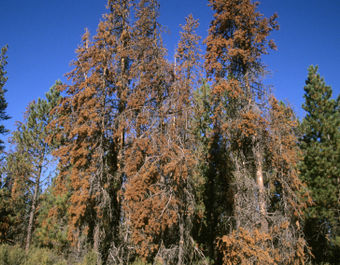
More on Vulnerability of Minnesota's North Woods and BWCA to Pests In A Warming Climate. Here is more detail from Lee Frelich, at the University of Minnesota's Center for Hardwood Ecology:
"We have 100 Hobos in the BWCAW reading temperature
data every hour, but we won't download the winter data until April or
May, and this is the first winter we have had them out there. When we
do, it will be very interesting to see the variation in minimum
temperatures for various landforms and forest types.
I can give you three examples of insect pests of
trees that would be affected by -40 degrees: (1) The Mountain pine
beetle, native to North America, but not to MN; (2) The Eastern larch
beetle, native to MN, and (3) the emerald ash borer, native to Asia.
Mountain pine beetle, which has been shown to infest
jack pine at its western range limit in Canada, is killed off by -40 F
degree temperatures. This is probably why the insect never made its way
to Minnesota from the Rocky Mountains - it can't cross the Great Plains,
where there are no trees, and can't cross the southern boreal forest
across Alberta, Saskatchewan and Manitoba to get to Minnesota as long as
periods of -40 degree weather occur there. However, that could change
with a warmer climate and less frequent occurrences of -40 in the
southern boreal forest.
Eastern larch beetle has long been
present in MN as a native insect that generally remained at low levels
and attacked only weakened, dying trees in the past. However, in recent
years it has killed large acreages (60,000+ acres with major mortality)
of larch (aka tamarack) in MN, and the reason is thought to be warmer
winters, allowing populations of the bug to build up and attack healthy
trees.
An invasive species from Asia, the emeral ash borer,
has killed tens of millions of ash trees in Michigan, Ohio, and
southern Ontario, is also likely to be killed by -40 temperatures (or
perhaps even -30). It arrived a few years ago in the Twin Cities, where
its probably not cold enough in winter these days to kill the insect.
Whether it will be able to kill millions of ash trees in the ash swamps
of northern Minnesota could depend on winter minimum temperatures and a
warmer climate in the future.
Lee E. Frelich
Director, The University of Minnesota Center for Forest Ecology
Crocodile Warning! I think that's just about the
only thing I haven't seen crawled at the bottom of the TV screen in the
last couple of years. Details from Silicon Valley's
Mercury News.
Paul's Conservation Minnesota Outlook for the Twin Cities and all of Minnesota:
TODAY: Winter Weather Advisory. Glaze ice mixing with slushy snow later. Icy roads. High: 32
SUNDAY NIGHT: Wet snow mixed with sleet and rain, maybe 1" of slush. Low: 27
MONDAY: January Thaw. Mostly cloudy and milder. High: 34
TUESDAY: Rain ends as slushy snow. Colder. Wake-up: 27. High: 33 (falling by afternoon)
WEDNESDAY: Parka weather. Gusty & colder with falling temperatures. Wake-up: 14. High: 16
THURSDAY; Coldest day of the week. Windchill: -20. Wake-up: -3. High: 2
FRIDAY: Nippy start, clouds increase. Wake-up: -11. High: 5
SATURDAY: Clearing, still colder than average. Wake-up: 2. High: 19
* a few more days in the 30s are likely next week.
Climate Stories....
Climate Change Views Swayed By Weather, Research Finds.
NBC News has the story, here's an excerpt: "...
Independent
voters shift their views on climate change with the weather, new
research suggests. During cold snaps, Independents tend to be more
skeptical of human-caused global warming than they are on unseasonably
warm days, which seem to make them believers, according to a study
published in the journal Weather, Climate, and Society. Democrats and Republicans stuck
to their climate-change beliefs regardless of short-term weather
changes. "Independent voters were less likely to believe that climate
change was caused by humans on unseasonably cool days, and more
likely to believe that climate change was caused by humans on
unseasonably warm days," said study author Lawrence Hamilton, a
sociologist at the University of New Hampshire, in a statement..."
Photo credit above:
John Gress / Reuters. "Chicago
Fire Department Lieutenant Charley De Jesus walks around an
ice-covered warehouse that caught fire Tuesday night in Chicago January
23, 2013."
Here's an eye-opening story that hasn't got much
play in U.S. mainstream media. It's getting a lot of play in Europe
press though. Maybe media outlets are afraid of antagonizing all those
fossil fuel advertising dollars?
Dollars For Deniers: Big Oil Funds Climate Science Denialism.
I guess half a BILLION dollars buys a fair number of bloggers,
pseudo-scientists and "think tanks" capable of keeping confusion and
doubt alive, as reported at
Climate Change: The Next Generation.
Here's an excerpt: "...we've known for some time that Big Oil channels
money to Big Denialism to support a variety of efforts, including
projects to ruin science education in schools, to pa people to show up
at demonstrations, to fund "research" that confuses, if not attempts
(unsuccessfully) to throw false wrenches in the intricate and vital
scientific machine. And now, we learn that some of these connections are
more direct than previously thought, and involve much larger sums of
money than most had imagined. According to
Steve Conner at The Independent (U.K.):
A
secretive funding organisation in the United States that guarantees
anonymity for its billionaire donors has emerged as a major operator in
the climate “counter movement” to undermine the science of global
warming…
The
Donors Trust, along with its sister group Donors Capital Fund, based
in Alexandria, Virginia, is funnelling millions of dollars into the
effort to cast doubt on climate change without revealing the identities
of its wealthy backers or that they have links to the fossil fuel
industry.
More links:
In An Era Of Climate Change, Where Will The Fish, And The Money, Go?
Minnesotans love to fish (hardly a bulletin), but last summer it was so
hot that many fish died in overheated lakes. A fluke, or a sign of
summers to come? Here's an excerpt of a story at
Popular Science that caught my eye - focusing on recent shifts and trends seen in Arctic waters: "
Like
the American pika and some other land-based creatures, fish are on the
move as they try to adapt to a changing climate. One place this is
happening is the seas surrounding the Arctic Ocean. But precisely how
fast, in what direction, and to what effect the fish will migrate from
their home turf is a big unknown....The seas around the Arctic Ocean are
estimated to host at least 20 percent of all the fish in the world’s
seas. Aside from their economic promise the northern seas could also
play a big role in contributing to global food security. “The world’s
growing population means need more access to food resources,” Lisbeth
Berg Hansen, Norway’s Minister of Fisheries and Coastal Affairs, told the Arctic Frontiers conference I’m attending this week in the northern Norwegian city of Tromso...."
Image credit above: "
A map of current and projected Arctic conditions." IPCC
The Effects Of Climate Change Have Arrived Ahead Of Schedule. Here's a snippet of an Op-Ed at
The Washington Post: "...
Everyone
from small to large businesses, from local to state governments are
now factoring climate change into their planning. A local architect
told me the other day that there are no stock gutters that have the
capacity to handle the run-off from today’s more intense downpours. In
corporate board rooms, climate change is now an issue discussed in strategic business plans
and governments are wondering how they are going to possibly afford to
pay for storm clean-ups and the economic loss caused by floods and
drought. In New York City alone, the two main emergency rooms that serve
lower Manhattan were barely up and running two months after Sandy and
the money needed to repair the city's infrastructure is a mind-blowing amount,
not even accounting for the money necessary to fortify it against the
next storm. The impact of climate change has arrived ahead of schedule,
and the gulf between reality and the climate deniers has widened...."
NASA Retirees Appeal To Their Own Lack Of Climate Authority.
Who do you believe, a retired astronaut, or thousands of climate
scientists, all saying pretty much the same thing. Hmmm. Let me think
that over. Details from
Skeptical Science: "...
Now in January of 2013, a group of 20 "Apollo era NASA retirees" has put together a rudimentary climate "report" and issued a press release
declaring that they have decided human-caused global warming is not
"settled" and is nothing to worry about. This time around they have not
listed the 20 individuals who contributed to this project, but have
simply described the group as being:
"...comprised of renowned space
scientists with formal educational and decades career involvement in
engineering, physics, chemistry, astrophysics, geophysics, geology and
meteorology. Many of these scientists have Ph.Ds"
Make Climate Change A Priority. Here's a portion of an Op-Ed (appeal) from the President of the World Bank at
The Washington Post: "...
If there is no action soon, the future will become bleak. The World Bank Group released a reportin
November that concluded that the world could warm by 7.2 degrees
Fahrenheit (4 degrees Celsius) by the end of this century if concerted
action is not taken now. A world that warm means seas would rise 1.5 to
3 feet, putting at risk hundreds of millions of city dwellers
globally. It would mean that storms once dubbed “once in a century”
would become common, perhaps occurring every year. And it would mean
that much of the United States, from Los Angeles to Kansas to the
nation’s capital, would feel like an unbearable oven in the summer...."
In Wall Street Journal Op-Ed Bjorn Lomborg Urges Delay With Misleading Stats. Here's an excerpt from
Climate Science Watch: "...
Lomborg makes many statements that almost all climate scientists would agree with. These include:
- Investments in hurricane resilience should be increased due to projected increases in storm intensity.
- In the long run, the world needs to cut carbon dioxide emissions.
- Investments in renewable energy technology R&D should be dramatically increased.
However, Lomborg ends these common-sense recommendations with the
conclusion that current investments in climate mitigation, including
renewable energy subsidies, are wasteful. He uses a series of
distracting and misleading statements about trends in extreme weather
to minimize the risks we face and delay action..."
Study Finds We Still Believe Untruths, Even After Instant Online Corrections. I found this to be an interesting nugget of confirmation bias, courtesy of
Tech Crunch; here's an excerpt: "
If
you’ve ever wondered why birthers, inside jobbers, and other
conspiracy theorists won’t simply take the truth at face value, two
researchers at OSU have found that we tend to ignore – and reject –
instant corrections to data. The study,
performed by R. Kelly Garrett and Brian Weeks, examined what happens
when untruthful information is immediately corrected in a news story.
While some programs claim to call out false information automatically,
such systems make users “more resistant to factual information.” That’s
right: the more truth we read, the more we tend to believe
strongly-held lies. “Humans aren’t vessels into which you can just pour
accurate information,” said Garrett. “Correcting misperceptions is
really a persuasion task. You have to convince people that, while there
are competing claims, one claim is clearly more accurate...”


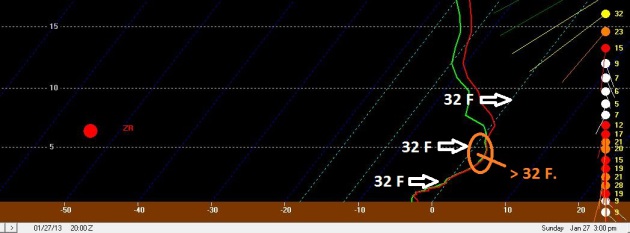
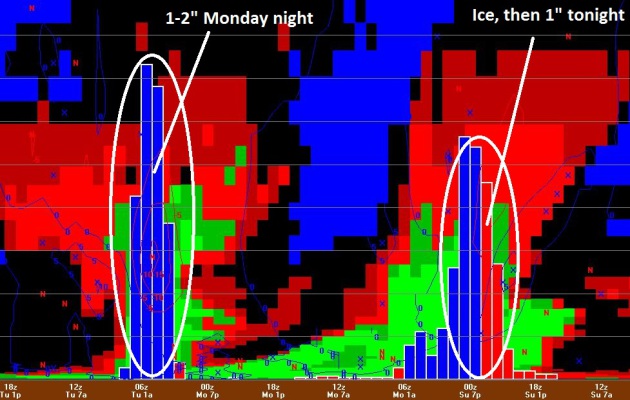
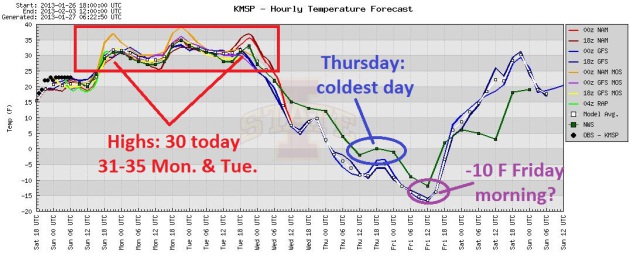
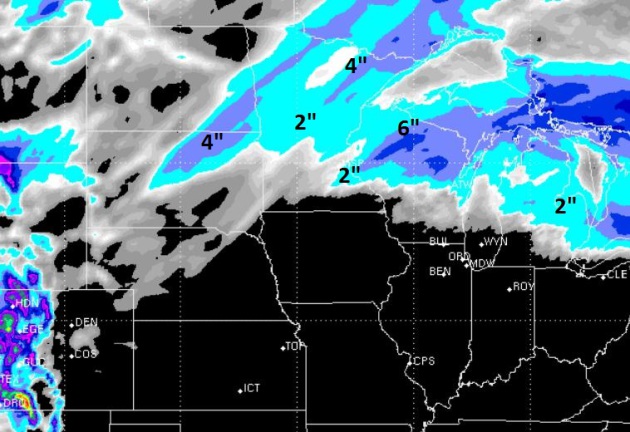

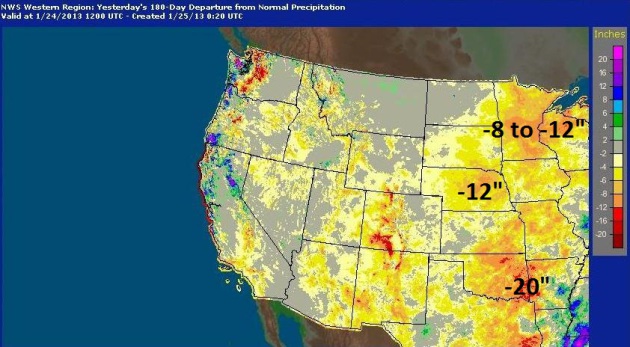




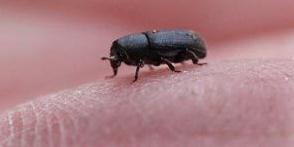
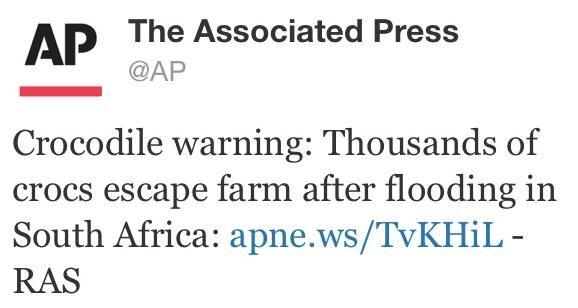
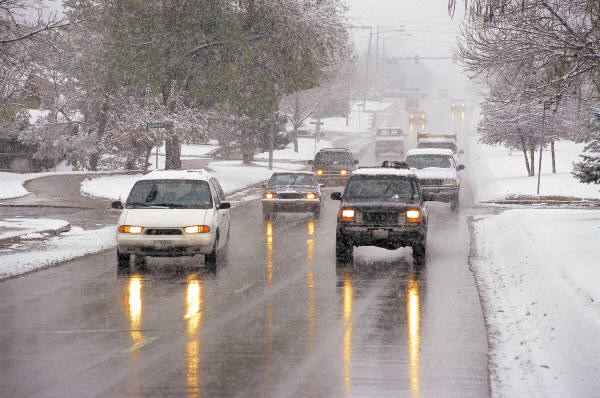
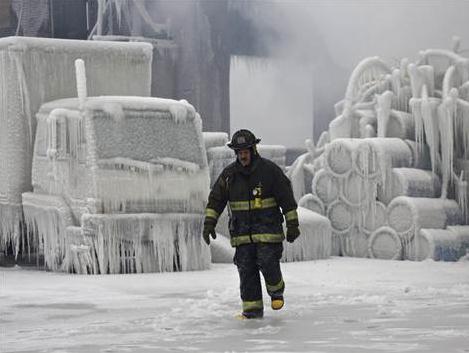

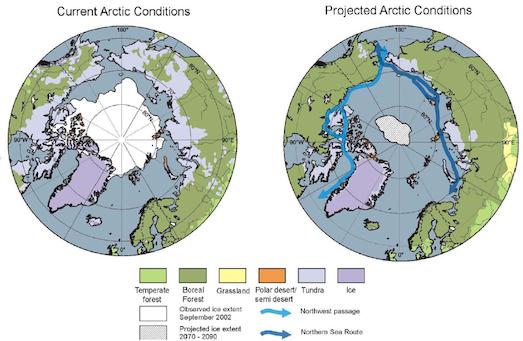

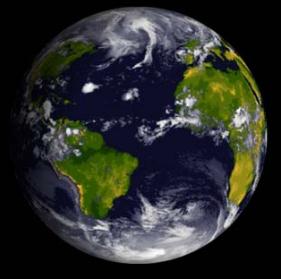



No comments:
Post a Comment